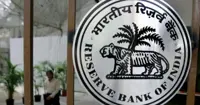FII investment in Indian debt surges to $2.56 billion in February
24 Mar 2014
The Reserve Bank of India (RBI) has, meanwhile, reduced the existing sub-limit for FII / QFI investment in commercial paper from $3.5 billion to $2 billion.
All eligible investors will now be permitted to invest up to $2 billion in commercial papers within the corporate debt limit of $51 billion.
Also, according to RBI experts, the spread between consumer price index (CPI)-based inflation in the two countries are narrowing, and with the RBI shifting focus to CPI-linked inflation, investment in government bonds are more attractive to foreign funds.
Retail inflation eased more than expected, to a 25-month low, in February, when it has risen 8.1 per cent from a year earlier, compared with 8.79 per cent in January.
Analysts say, the spread between retail inflation in India and the US narrowed from 9.96 in November to 8.37 in December and further to 7.19 in January.
A squeeze in the inflation differential between India and the US, and rupee depreciation has helped bond spreads between the yield of 10-year Indian and US government bonds at 6-6.25 per cent, which is considered good.
Market expects the government to complete 60-65 per cent of its total FY15 market borrowing target of Rs5,97,000 crore during the first six months of the fiscal, ie, April-September 2014-15.
Foreign Institutional Investors also bought shares worth Rs59,296 crore and sold stocks to the tune of Rs49,699 crore till 21 March, resulting in a net inflow of Rs9,597 crore ($1.56 billion), according to the Securities and Exchange Board of India data.
FIIs, the major drivers of the Indian stock market, have helped push the benchmark BSE Sensex almost 635 points, or 3 per cent so far this month.
As of 21 March 2014, there were 1,715 registered FIIs in the country and 6,318 sub-accounts.







.webp)























